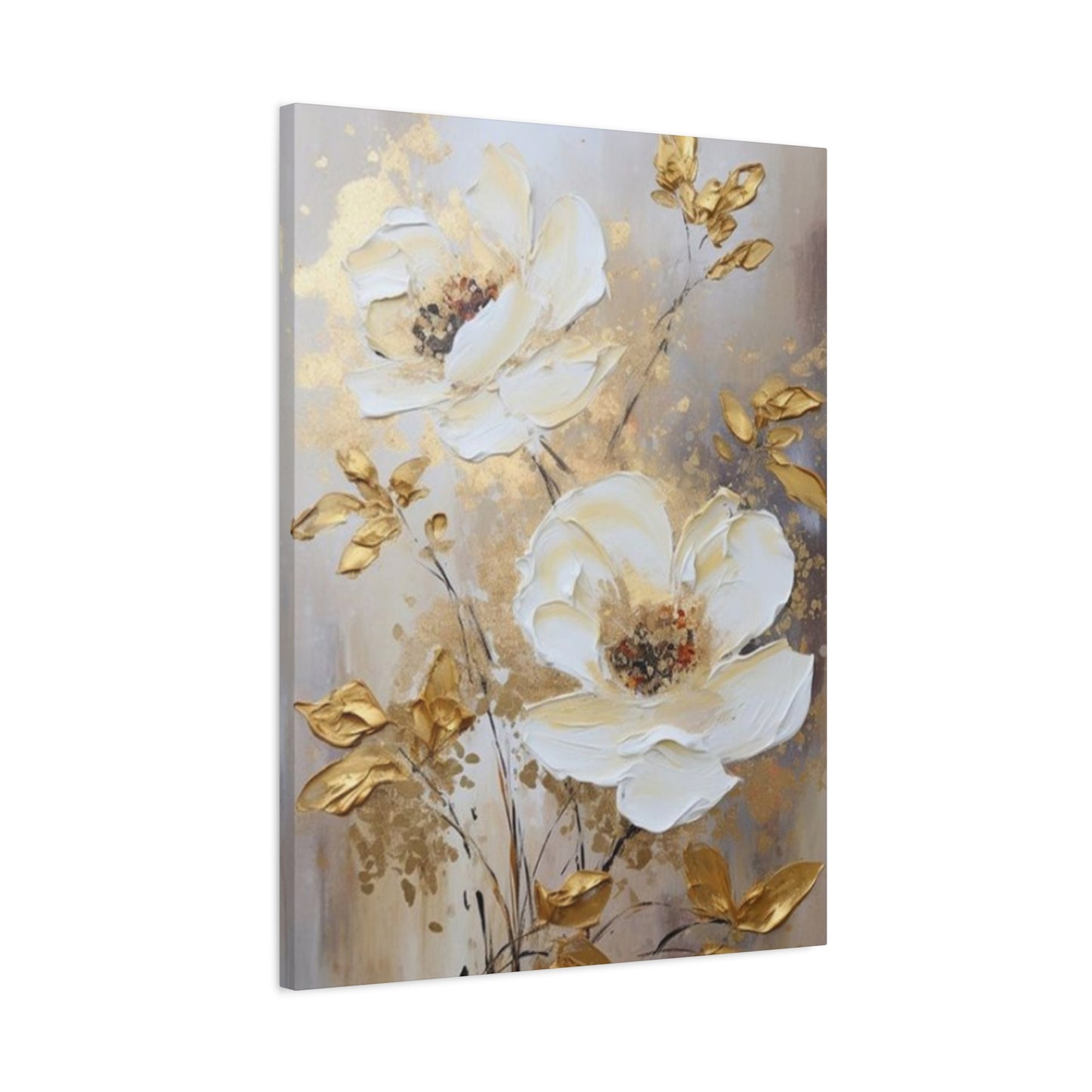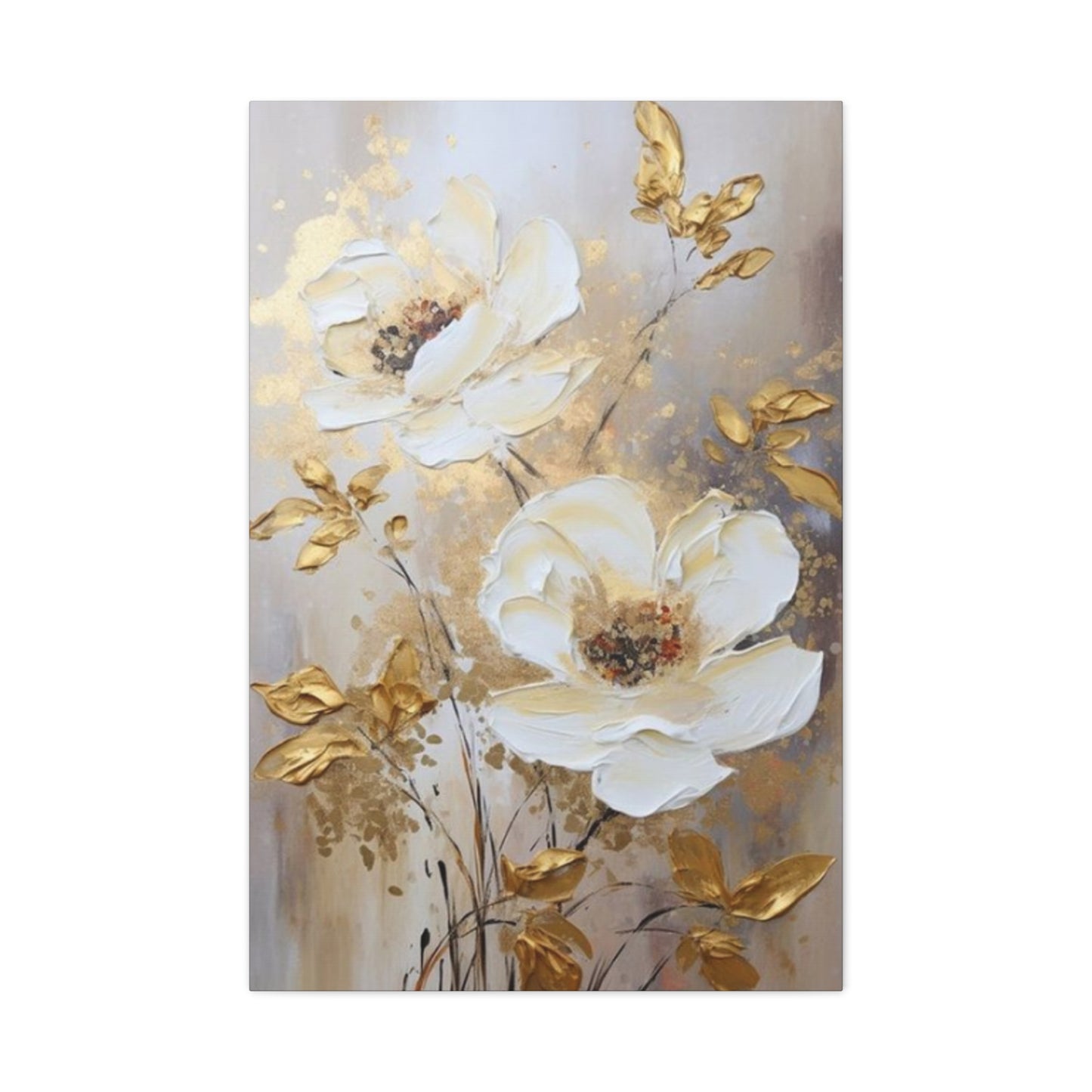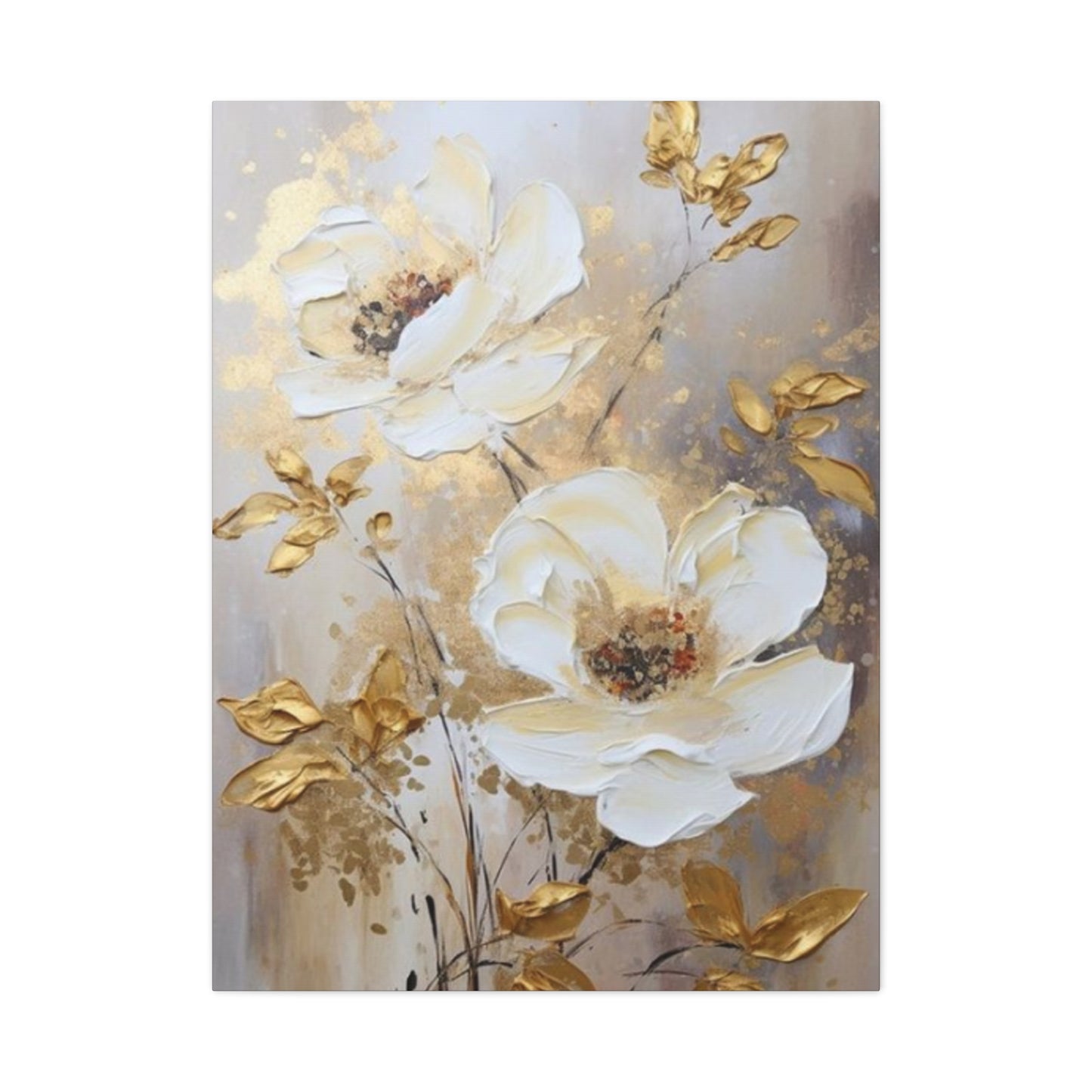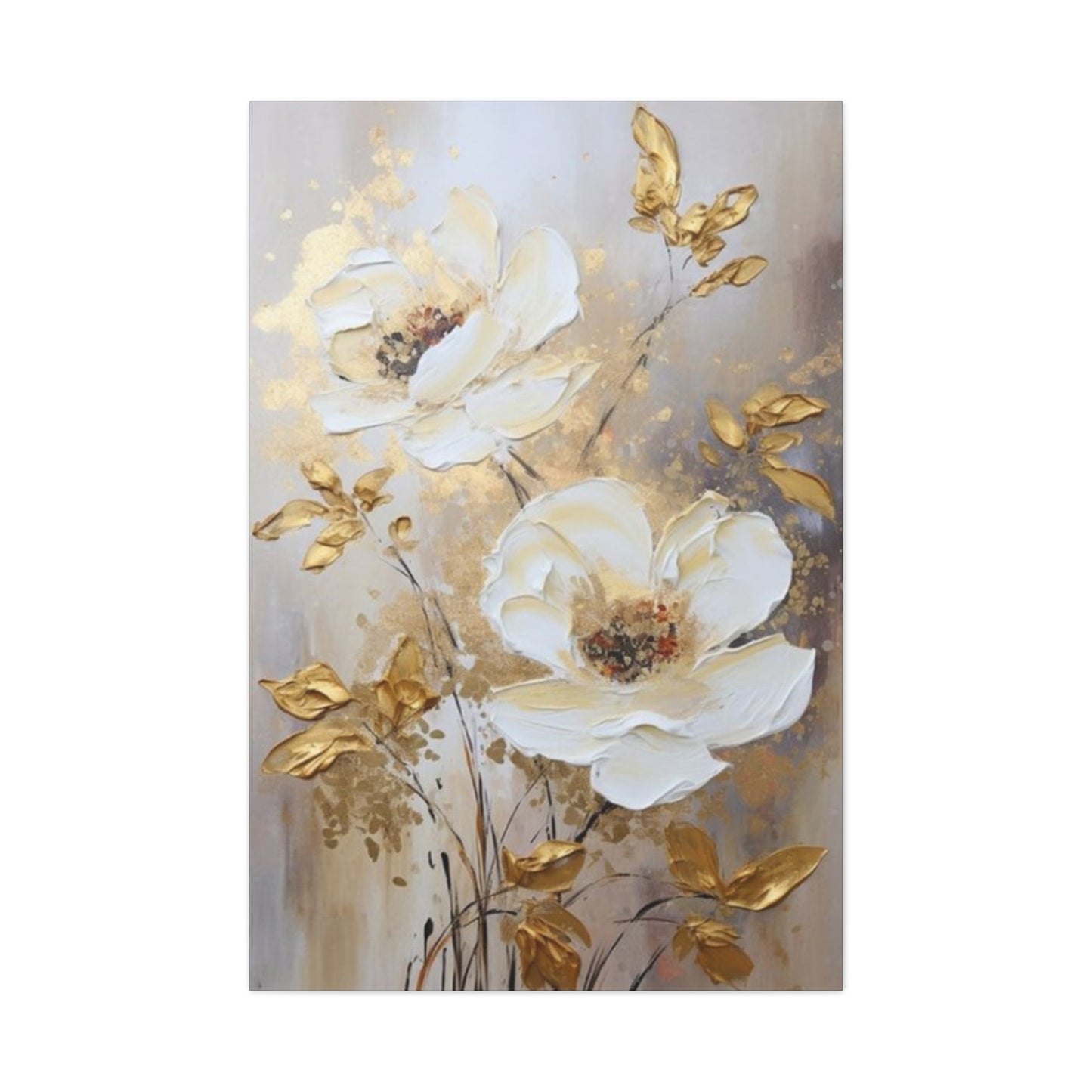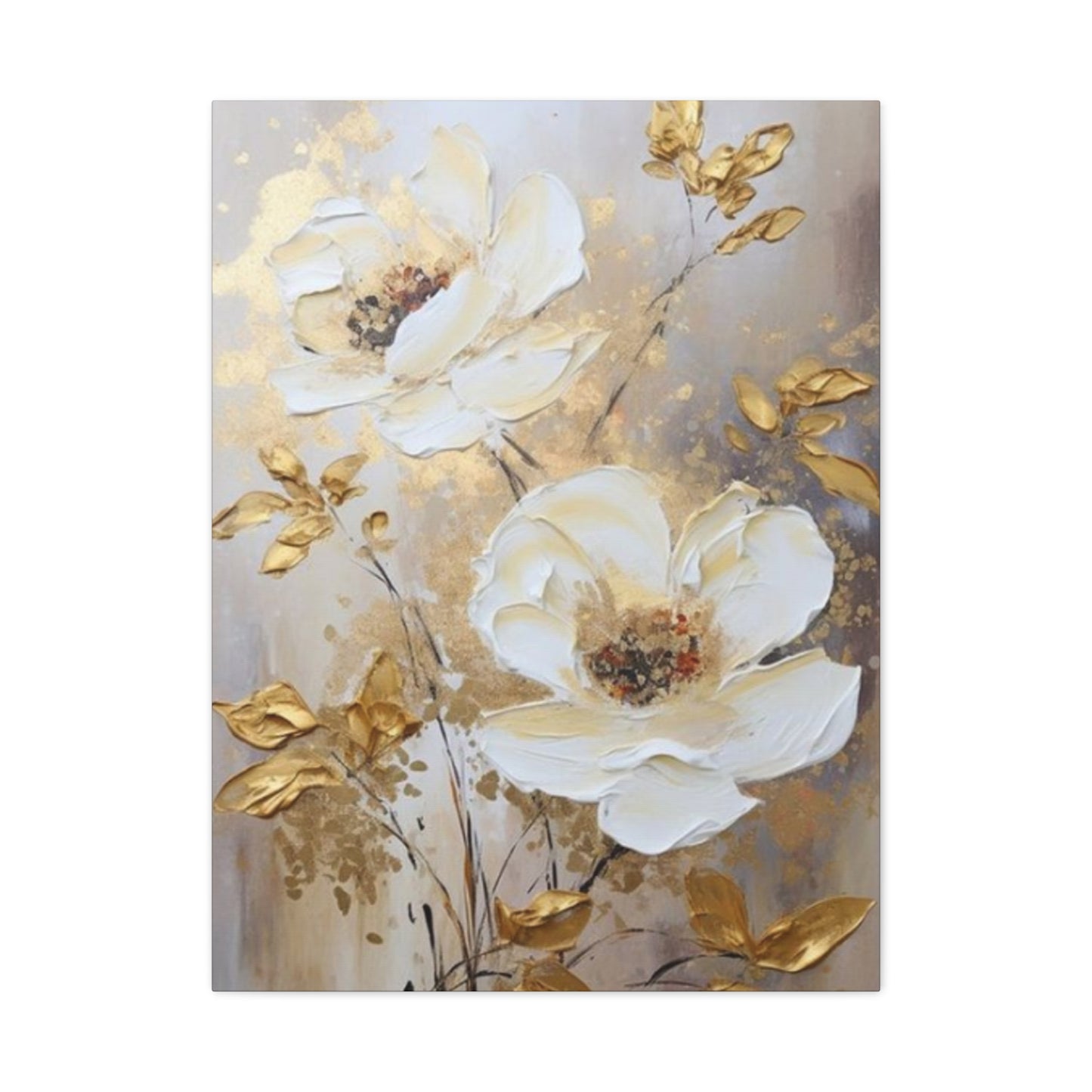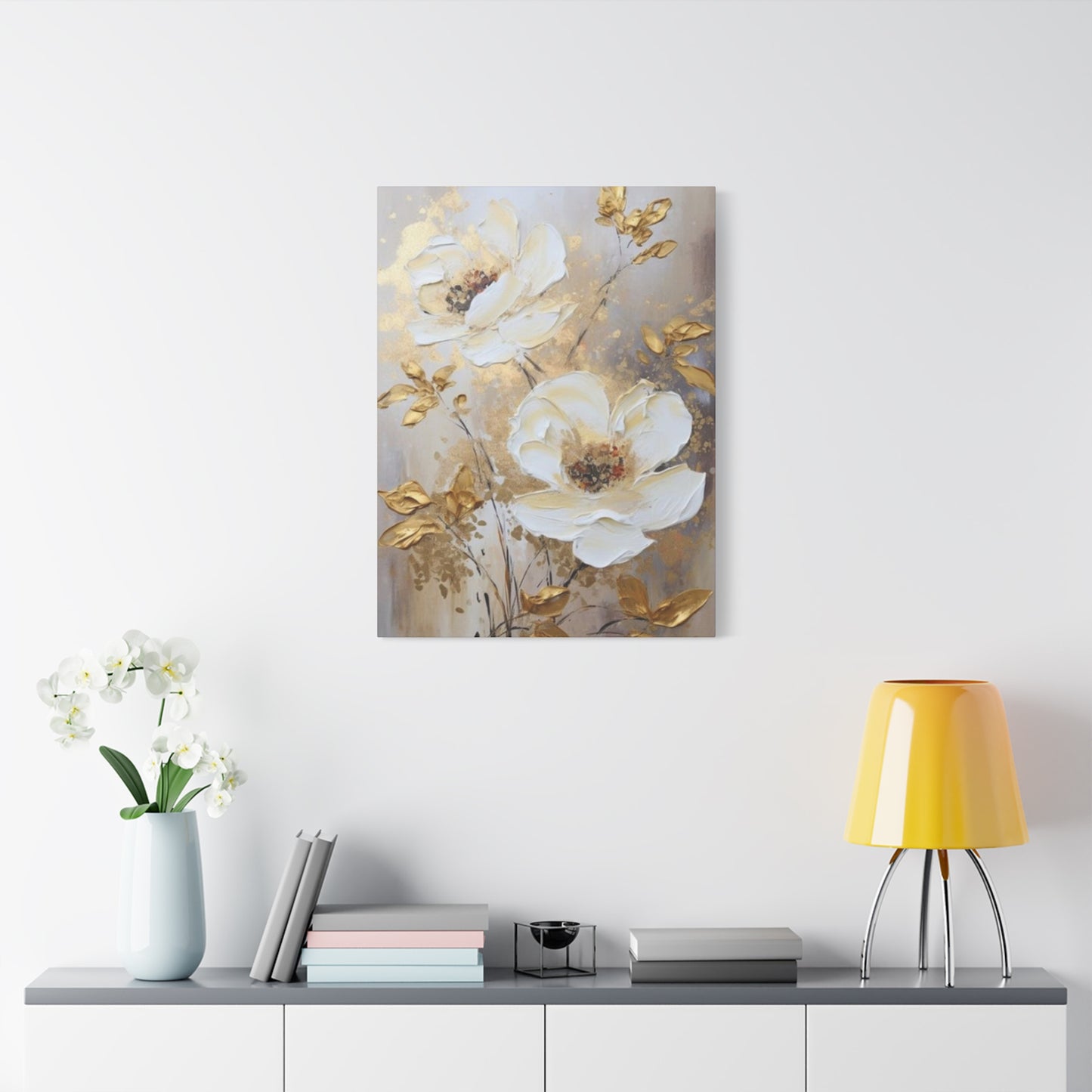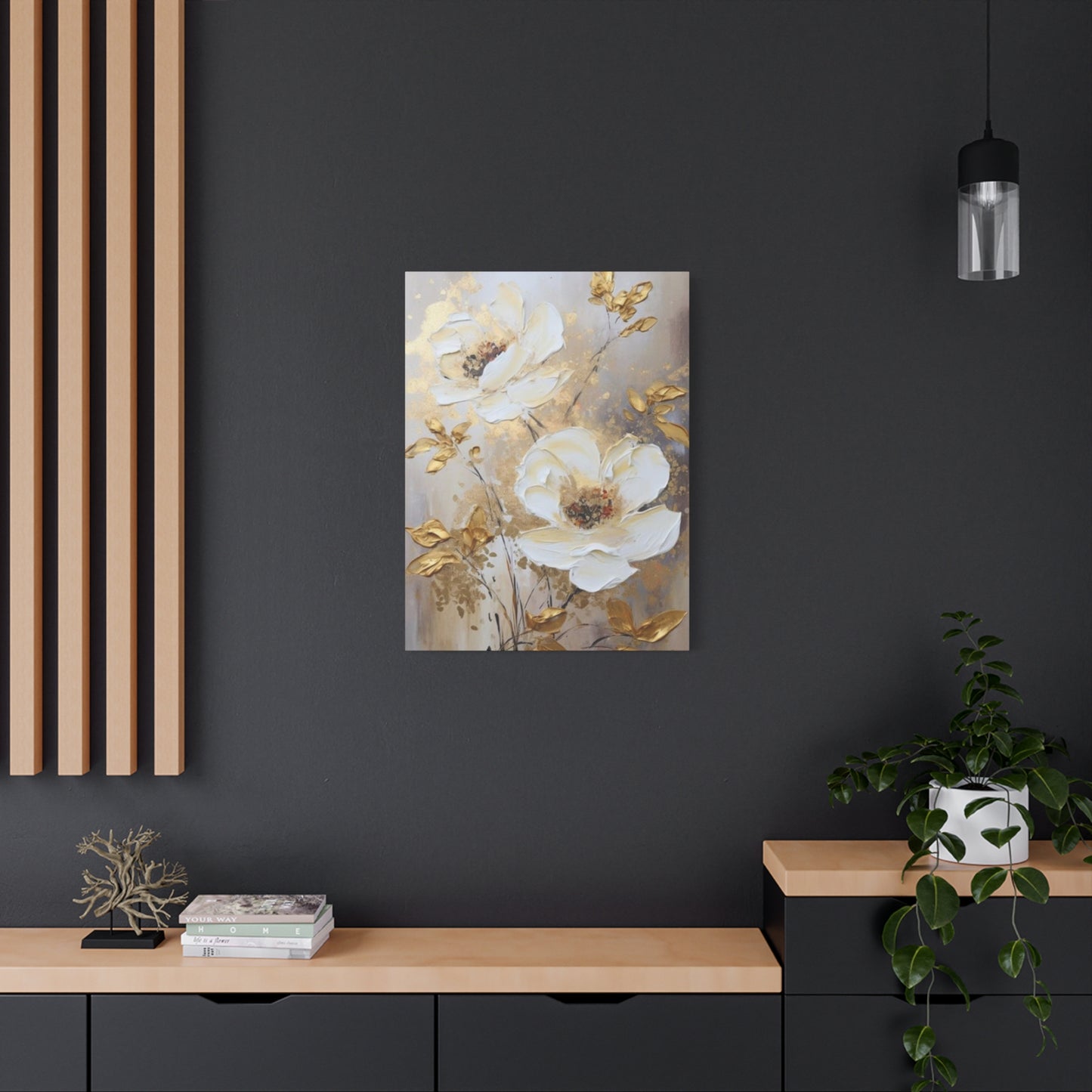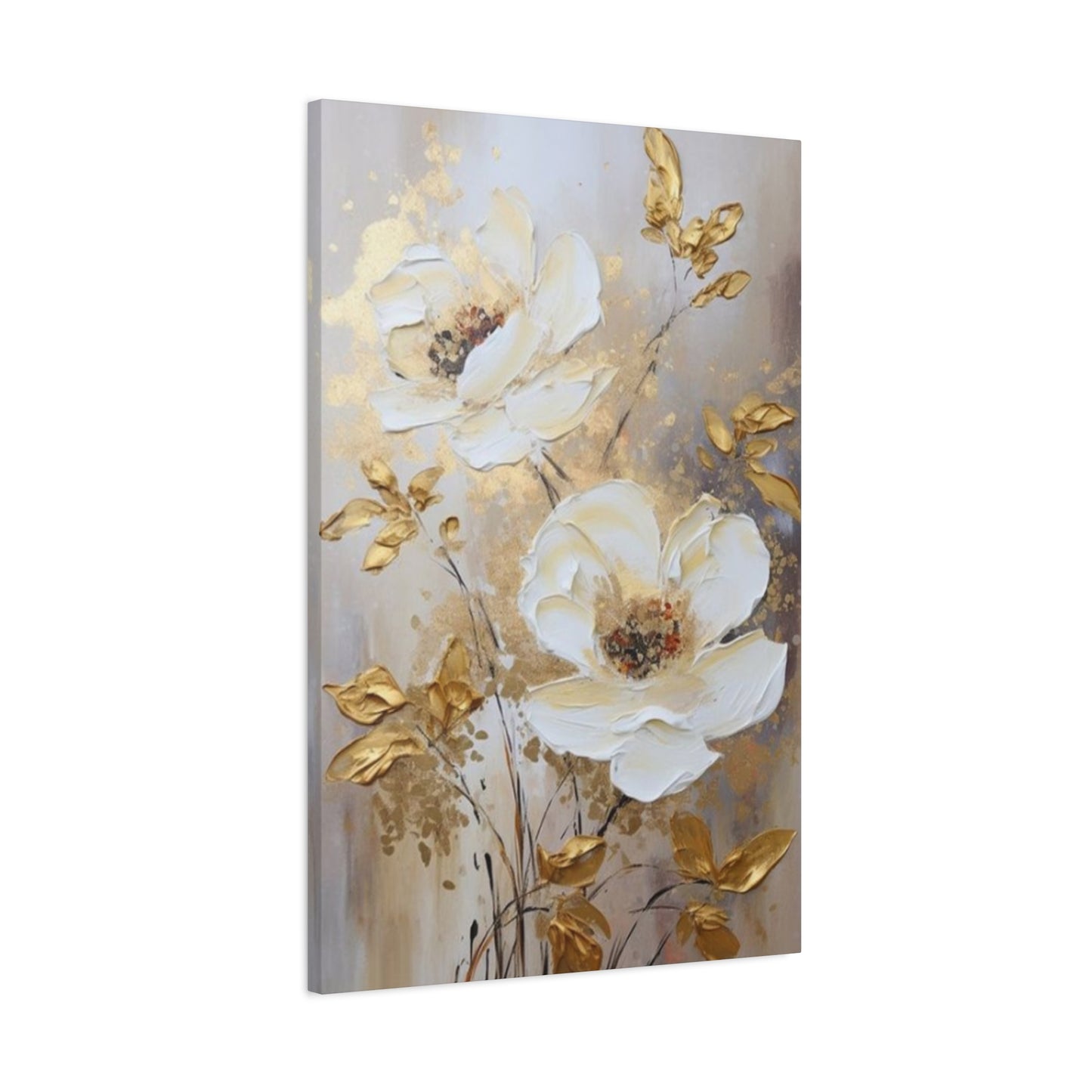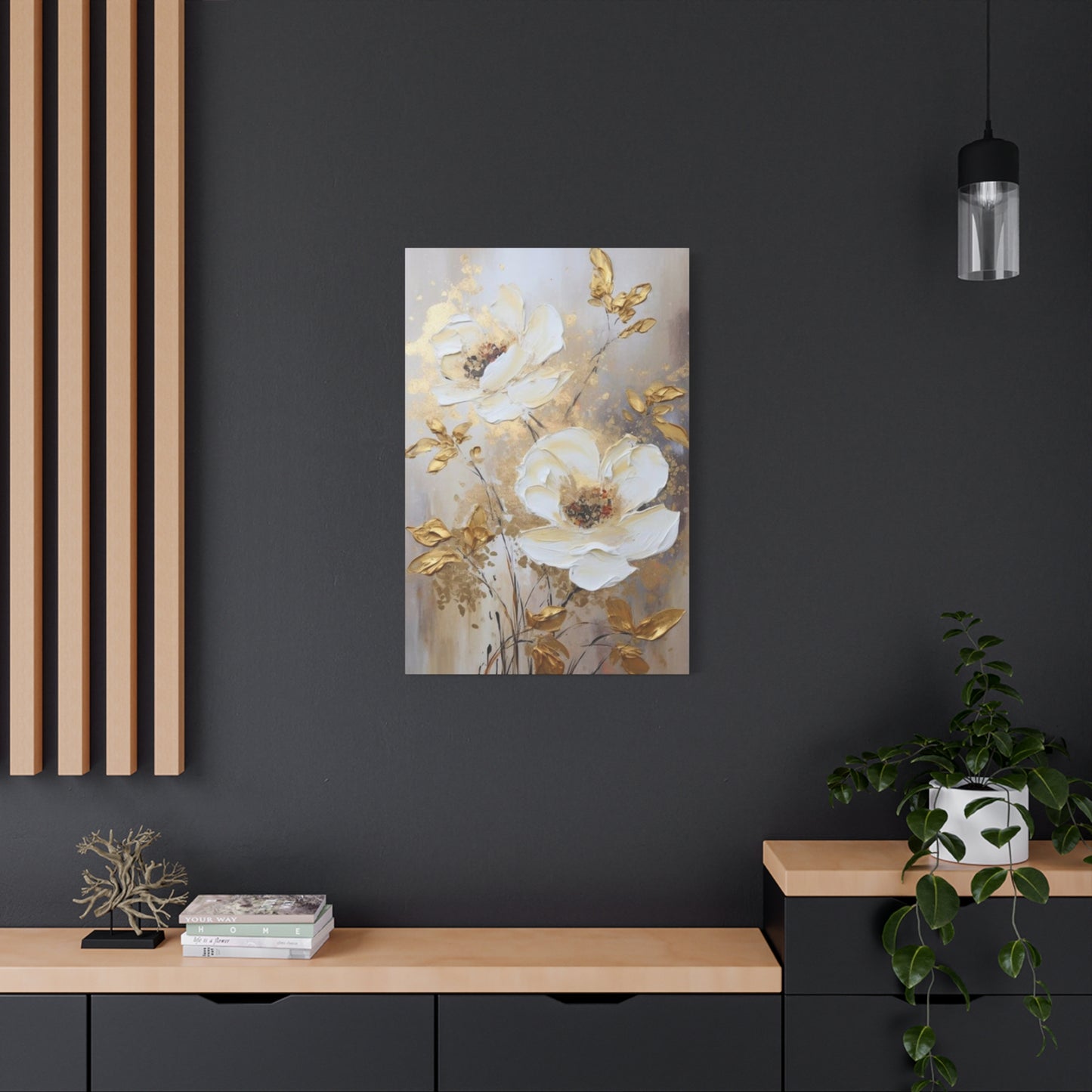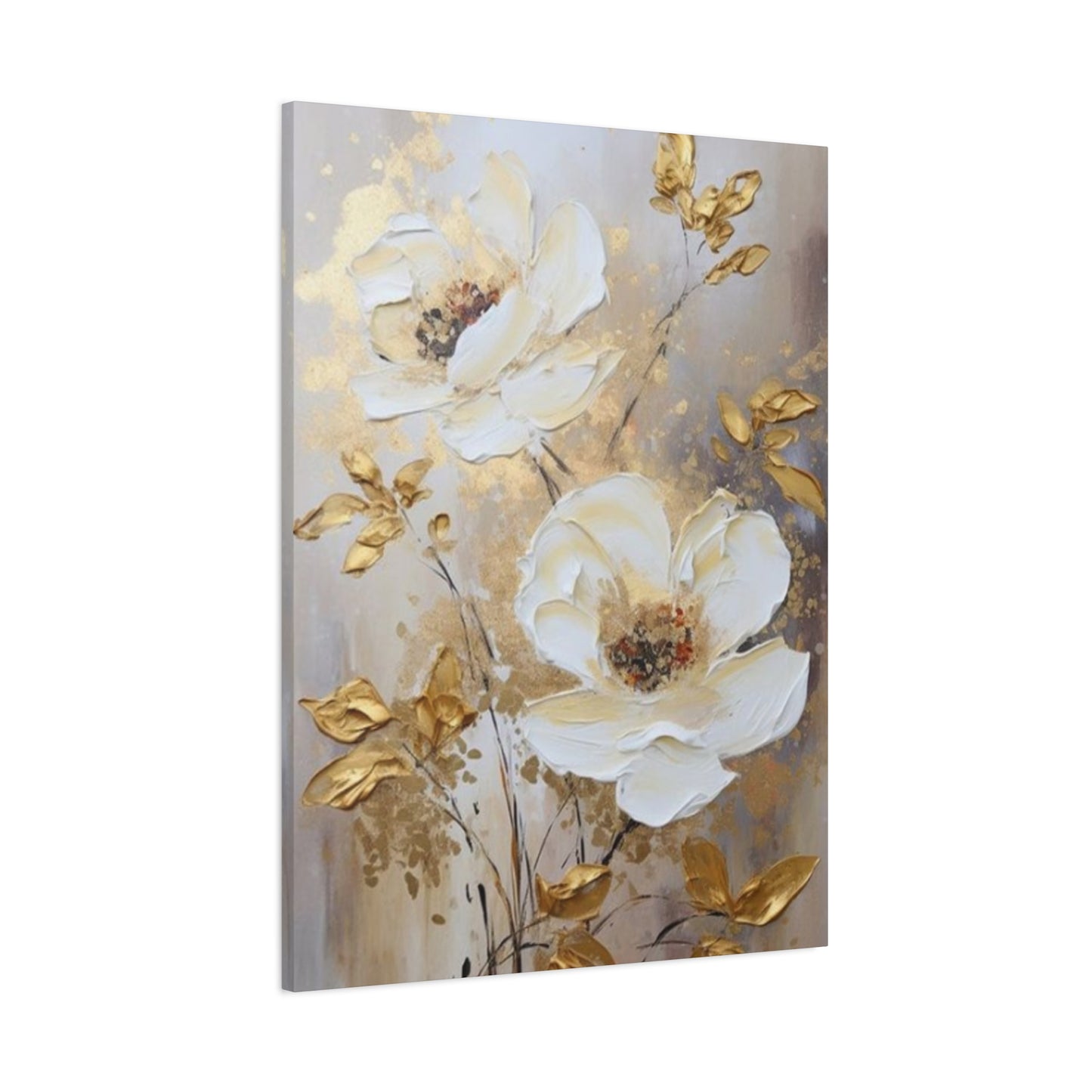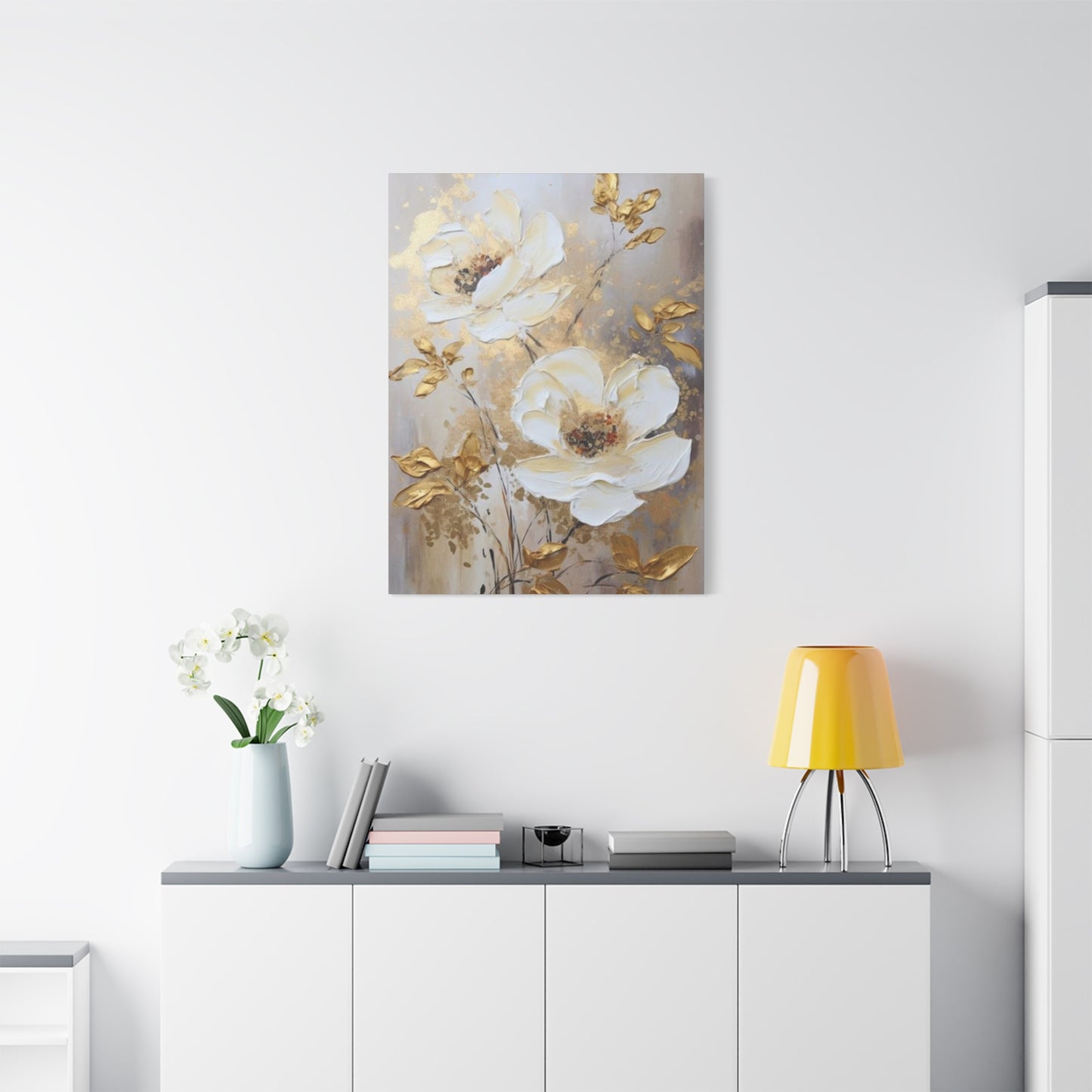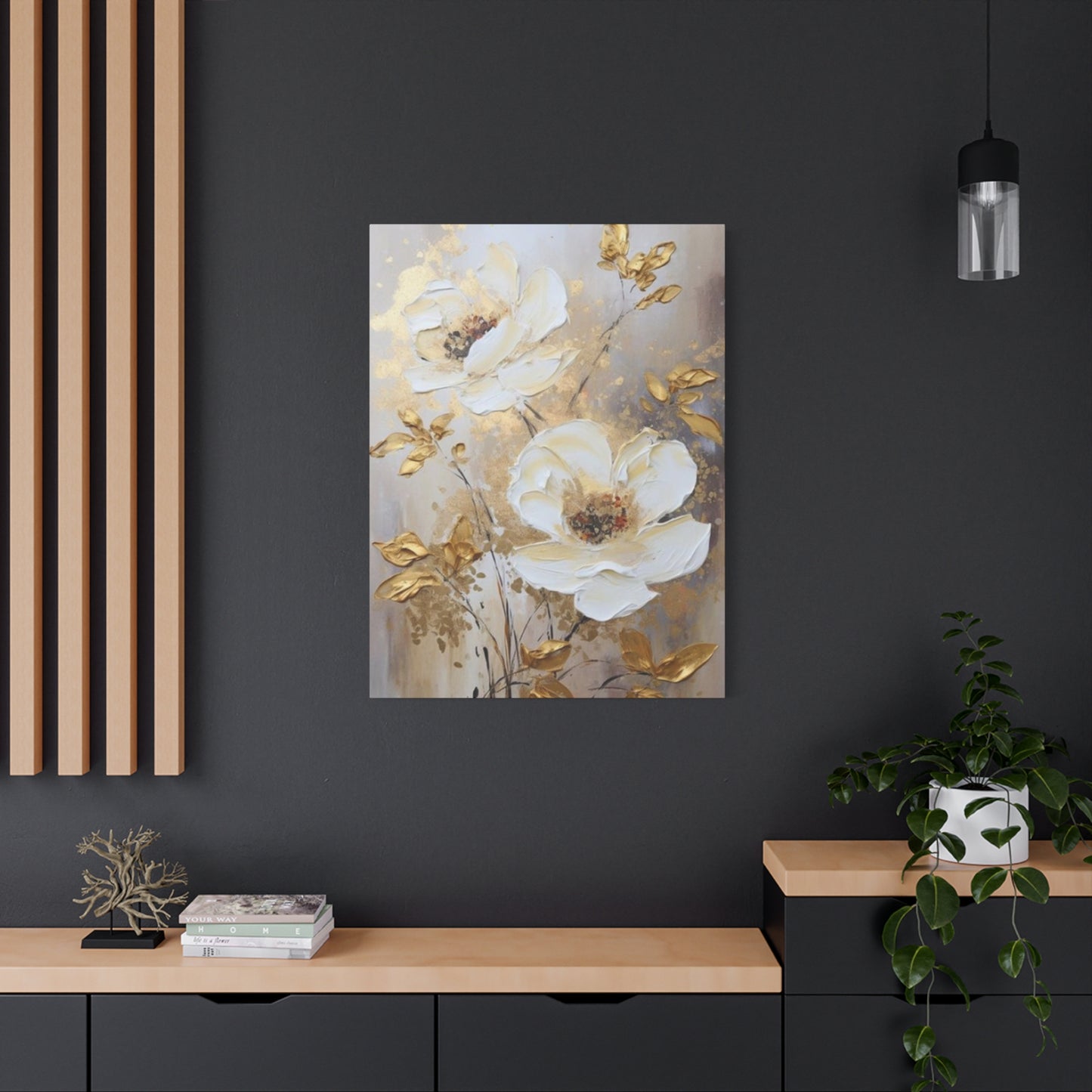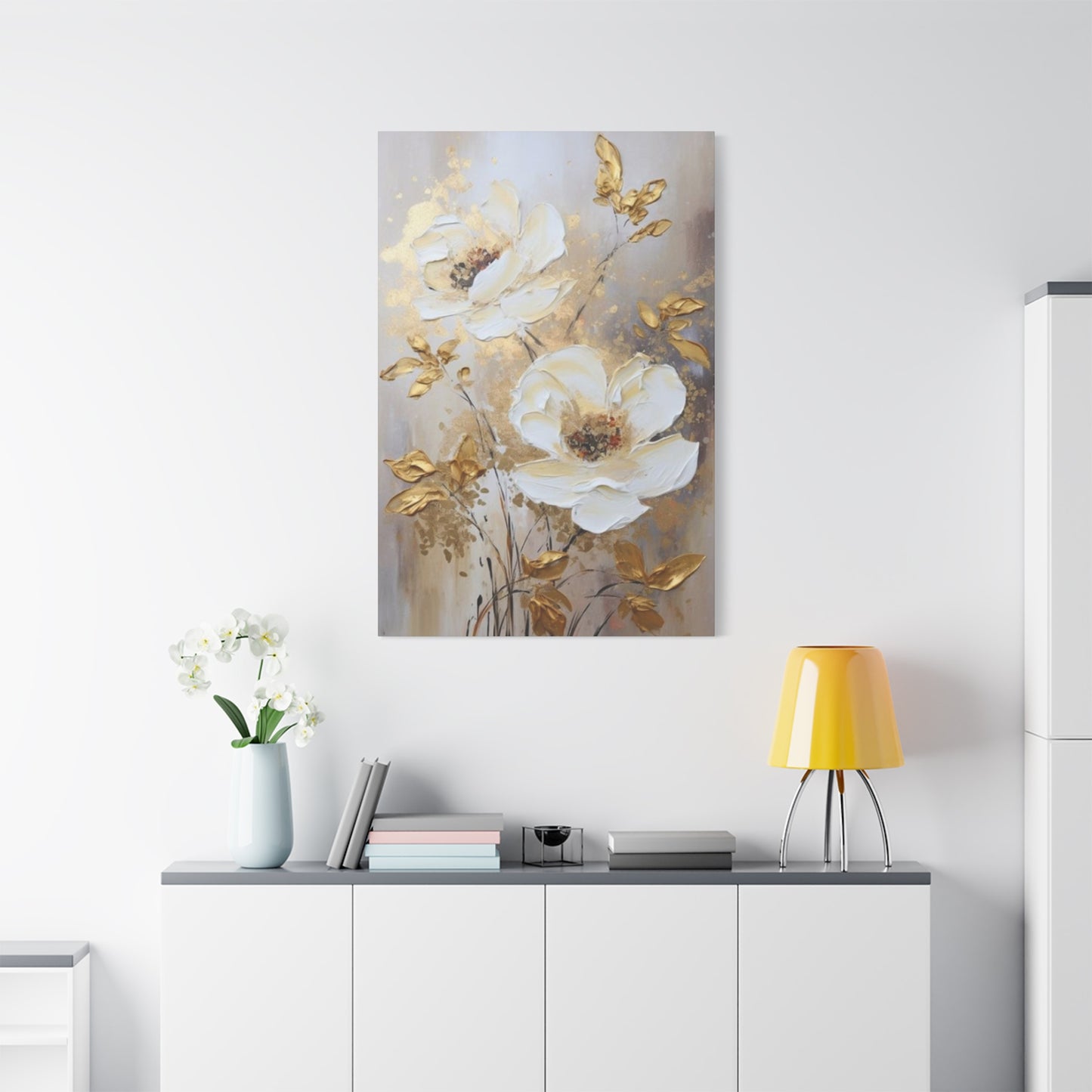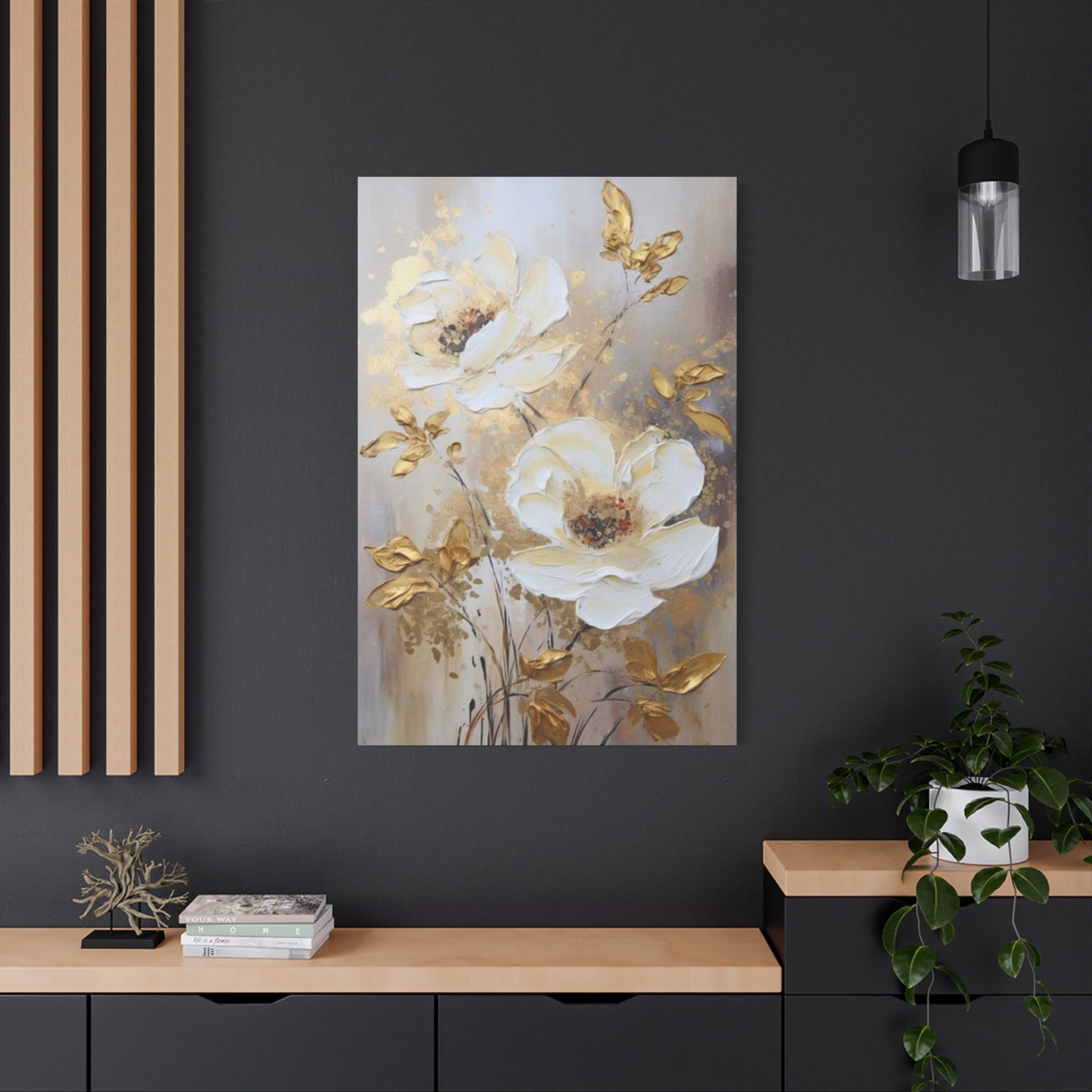Eternal Beauty of Golden Flower Wall art: Crafting Timeless Sophistication
Golden flowers represent the pinnacle of botanical artistry, capturing nature's most precious moments in lustrous hues that never fade. These magnificent creations bring warmth, luxury, and enduring charm to any living environment. The appeal of golden blooms lies in their ability to bridge seasons, maintaining their radiant beauty throughout changing times while offering a constant source of visual delight.
The artistry behind golden flower representations goes beyond mere decoration, embodying centuries of cultural significance and aesthetic appreciation. From ancient civilizations that revered gold as a symbol of divine power to contemporary artists who use metallic tones to convey modern sophistication, these pieces carry profound meaning. The luminous quality of golden petals creates an almost magical atmosphere, transforming ordinary rooms into extraordinary sanctuaries of beauty.
When selecting golden flower artwork, consider how light plays across metallic surfaces throughout the day. Morning sunlight reveals subtle shimmer and depth, while evening illumination creates dramatic shadows and highlights. This dynamic quality makes golden botanical art particularly engaging, as each viewing experience offers something new to discover. The interplay between natural and artificial lighting sources can dramatically alter the mood and impact of these pieces.
The craftsmanship involved in creating authentic golden flower art requires exceptional skill and attention to detail. Artists must carefully balance metallic elements with organic forms, ensuring that the artificial enhancement never overwhelms the natural beauty of the botanical subject. This delicate equilibrium results in pieces that feel both luxurious and grounded in nature's original design.
Different techniques produce varying effects in golden flower art. Hand-applied gold leaf creates rich, textured surfaces that catch light beautifully, while digital metallic printing offers precise control over color gradation and detail. Mixed media approaches combine multiple methods, resulting in complex, layered compositions that reward close examination. Understanding these techniques helps in appreciating the artistry and value of different pieces.
The psychological impact of golden flower art extends beyond aesthetic pleasure. The warm, optimistic qualities of gold naturally elevate mood and create feelings of prosperity and well-being. Combined with the organic beauty of floral forms, these pieces offer both visual comfort and emotional uplift. This dual benefit makes golden botanical art particularly valuable in creating nurturing, positive environments.
Historical context adds depth to our appreciation of golden flower motifs. From Byzantine religious art to Art Nouveau decorative movements, golden florals have consistently represented paradise, abundance, and divine favor. This rich heritage informs contemporary interpretations, connecting modern homes to centuries of artistic tradition and cultural meaning.
Luxurious Metallic Botanical Artwork Concepts
Metallic botanical artwork transcends traditional floral decoration by incorporating precious metal elements that elevate natural beauty to extraordinary heights. These sophisticated pieces combine the organic appeal of flowers with the luxurious shine of metals, creating artwork that commands attention while maintaining elegance. The fusion of natural and metallic elements produces visual tension that energizes any room while preserving a sense of refined taste.
Contemporary artists experiment with various metallic finishes to achieve different effects in botanical art. Brushed gold creates subtle, matte surfaces that suggest understated luxury, while polished gold delivers mirror-like reflections that dramatically amplify light. Aged or patinated metallic finishes add character and depth, suggesting pieces with history and gravitas. These varied approaches allow for precise matching with existing decor styles and personal preferences.
The application of metallic elements can range from subtle accents to bold, all-over coverage. Selective highlighting of key floral elements, such as petal edges or flower centers, creates sophisticated contrast while maintaining the natural essence of the botanical subject. Full metallic coverage transforms flowers into precious objects, creating statement pieces that anchor entire room designs. Understanding these approaches helps in selecting pieces that achieve desired visual impact.
Mixed metallic techniques offer additional complexity and visual interest. Combining gold with silver, copper, or bronze creates rich, layered effects that change depending on viewing angle and lighting conditions. These multi-tonal approaches work particularly well in rooms with varied lighting sources or complex color schemes, as they provide multiple metallic elements to coordinate with different design components.
The substrate choice significantly impacts the final appearance of metallic botanical art. Canvas provides texture that interacts beautifully with metallic applications, creating subtle variations in surface reflection. Metal panels offer smooth, industrial backgrounds that make metallic florals appear to float above the surface. Wood substrates add warmth and organic character that complements botanical subjects while enhancing metallic shine through contrast.
Scale considerations become particularly important with metallic botanical art. Large pieces create dramatic focal points but require careful integration to avoid overwhelming room proportions. Medium-sized works offer versatility, working well in groupings or as standalone features. Smaller metallic botanical pieces excel in creating accent points and building layered gallery displays that gradually draw viewers deeper into the composition.
Lighting design plays a crucial role in maximizing the impact of metallic botanical artwork. Directional lighting emphasizes texture and dimension, while diffused illumination creates gentle, even coverage that highlights color and form. Adjustable lighting systems allow for different effects throughout the day, maximizing the dynamic qualities inherent in metallic surfaces. Strategic placement relative to natural light sources ensures consistent visual appeal regardless of time or weather conditions.
The maintenance of metallic botanical artwork requires specific care to preserve both appearance and longevity. Gentle cleaning techniques protect delicate metallic surfaces from damage while removing accumulated dust and environmental pollutants. Proper environmental controls, including humidity and temperature management, prevent oxidation and other degradation processes that could diminish metallic brilliance over time.
Luxurious Golden Botanical Prints for Main Living Areas
Main living areas serve as the heart of domestic life, making them ideal locations for impressive golden botanical prints that create welcoming, sophisticated atmospheres. These central gathering locations benefit from artwork that establishes mood and character while providing conversation-starting visual elements. Golden flower prints bring warmth and elegance to these communal environments without overwhelming the functional requirements of everyday living.
The selection process for main living area artwork requires careful consideration of room proportions, furniture placement, and traffic flow patterns. Large golden botanical prints work exceptionally well above seating arrangements, creating intimate conversation areas while adding vertical visual interest. The reflective qualities of golden elements help distribute light throughout the room, making gathering areas feel more open and inviting while maintaining cozy, intimate character.
Color coordination becomes particularly important in main living areas where golden botanical prints must harmonize with existing furnishings and decor elements. Warm gold tones complement earth-based color palettes beautifully, enhancing browns, creams, and rich jewel tones commonly found in traditional furnishing schemes. Contemporary neutral palettes benefit from the warmth and richness that golden florals provide, preventing minimalist approaches from feeling cold or sterile.
Multiple golden botanical prints can create cohesive design schemes throughout interconnected living areas. Varying sizes and compositions while maintaining consistent golden tones establishes visual rhythm that guides movement through different functional zones. This approach works particularly well in open-plan living arrangements where artwork helps define separate areas while maintaining overall design unity.
Seasonal adaptability makes golden botanical prints particularly valuable in main living areas. Unlike fresh flowers that require constant replacement, these permanent installations provide consistent beauty throughout changing seasons. The warm tones of golden florals offer comfort during winter months while their luminous quality feels refreshing during summer seasons. This year-round appeal maximizes investment value while maintaining design consistency.
The positioning of golden botanical prints relative to seating arrangements affects both aesthetic impact and conversation dynamics. Artwork placed at eye level for seated viewers creates intimate viewing experiences that reward close examination. Higher placement draws attention upward, making rooms feel larger while creating dramatic focal points. Understanding these spatial relationships helps optimize both artistic impact and functional living requirements.
Entertainment considerations influence artwork selection in main living areas. Golden botanical prints with subtle metallic elements avoid competing with television screens or other electronic displays, while still providing visual interest during non-entertainment periods. The reflective qualities of golden surfaces can complement ambient lighting schemes designed for different activities, from bright task lighting to dim mood illumination.
Guest impressions often form quickly in main living areas, making golden botanical prints valuable tools for establishing sophisticated, welcoming first impressions. The luxury associations of golden elements suggest prosperity and good taste without appearing ostentatious or overwhelming. Combined with the universal appeal of floral subjects, these pieces create broadly appealing environments that accommodate diverse guest preferences and cultural backgrounds.
Harmonious Combinations of Golden Blooms with Verdant Elements
The pairing of golden blooms with verdant elements creates dynamic visual relationships that celebrate both luxury and natural vitality. This combination draws inspiration from nature's own palette, where golden sunlight illuminates green foliage to create some of the most beautiful natural scenes. Translating this relationship into artwork produces pieces that feel both sophisticated and organically grounded, appealing to our innate appreciation for natural harmony.
Color theory supports the effectiveness of gold and green combinations through complementary and analogous relationships. Warm golden tones provide striking contrast against cool greens while maintaining enough similarity to create harmonious unity. This balance prevents either color from dominating while allowing both elements to enhance each other's visual impact. The result creates artwork that feels both energetic and peaceful, sophisticated yet approachable.
Different green tones produce varying effects when combined with golden florals. Deep forest greens create dramatic, rich backgrounds that make golden flowers appear to glow with inner light. Sage and olive greens provide subtle, sophisticated foundations that allow golden elements to shine without overwhelming contrast. Bright spring greens add vitality and freshness, creating artwork that feels alive and growing. Understanding these relationships helps in selecting pieces that achieve desired emotional and aesthetic effects.
Compositional approaches to combining golden blooms with verdant elements range from realistic botanical representations to abstract artistic interpretations. Traditional arrangements might feature golden roses surrounded by natural green foliage, creating familiar, comforting images. Modern interpretations might fragment and reassemble these elements in unexpected ways, creating dynamic, contemporary pieces that challenge conventional expectations while maintaining natural inspiration.
Texture plays a crucial role in successful gold and green combinations. Smooth, polished golden surfaces contrast beautifully with organic, varied green textures that suggest natural leaf patterns and growth structures. Mixed media approaches can incorporate actual plant materials or textured surfaces that mimic natural forms, adding dimensional interest that engages multiple senses beyond pure visual appreciation.
The symbolic significance of gold and green combinations adds depth to their aesthetic appeal. Gold traditionally represents prosperity, achievement, and divine favor, while green symbolizes growth, renewal, and natural vitality. Together, these elements suggest balanced success that remains grounded in natural principles and sustainable practices. This symbolic richness makes gold and green botanical art particularly meaningful in personal and professional environments.
Lighting considerations become complex when working with both golden and green elements. Golden surfaces reflect warm light beautifully but can appear flat under cool illumination. Green elements often benefit from cooler lighting that emphasizes their natural freshness but may clash with warm golden tones. Successful integration requires carefully balanced lighting that enhances both elements without favoring one at the expense of the other.
Seasonal variations in gold and green combinations offer opportunities for rotating artwork collections or selecting pieces that complement changing natural environments. Spring combinations might emphasize fresh, light greens with bright golden accents, while autumn arrangements could feature deeper, more mature green tones with rich, burnished gold elements. These seasonal considerations help artwork feel connected to natural rhythms while maintaining timeless appeal.
Contrasting Abstract and Realistic Golden Floral Representations
The choice between abstract and realistic approaches to golden floral art significantly impacts both aesthetic effect and emotional response. Realistic representations offer immediate recognition and connection to familiar natural beauty, while abstract interpretations challenge viewers to discover new relationships and meanings within familiar subjects. Understanding these different approaches helps in selecting artwork that achieves desired design goals and personal satisfaction.
Realistic golden floral art provides comfort and accessibility through familiar forms and recognizable beauty. These pieces often feature detailed botanical accuracy combined with luxurious golden enhancements that elevate natural subjects to precious status. The combination of familiar content with unexpected metallic treatment creates pleasing tension that maintains accessibility while adding sophistication and luxury appeal.
Photographic realism in golden floral art requires exceptional technical skill to balance natural accuracy with artistic enhancement. Artists must carefully preserve the essential character of botanical subjects while incorporating metallic elements that feel integrated rather than applied as afterthoughts. Successful realistic golden florals maintain the organic flow and natural proportions that make real flowers appealing while adding the luxury and permanence that metallic treatments provide.
Abstract golden floral art offers freedom from literal representation, allowing artists to explore color, form, and emotional content without natural constraints. These interpretations might fragment floral elements into geometric patterns, exaggerate proportions for dramatic effect, or combine multiple botanical subjects in impossible configurations. The result creates artwork that suggests rather than depicts, encouraging personal interpretation and emotional engagement.
Gestural abstraction in golden floral art emphasizes movement, energy, and emotional expression over literal accuracy. Bold brushstrokes and dynamic compositions create pieces that capture the essence of floral beauty without depicting specific botanical details. Golden elements might flow like liquid metal or explode like fireworks, creating artwork that feels alive with creative energy while maintaining connections to natural inspiration.
Semi-abstract approaches offer middle ground between realistic and fully abstract treatments. These pieces might simplify natural forms while maintaining recognizable floral elements, or they might stylize botanical subjects through geometric interpretation or color manipulation. Semi-abstract golden florals often work well in contemporary settings where completely realistic art might feel too traditional while fully abstract pieces might seem disconnected from natural beauty.
The emotional impact of abstract versus realistic golden floral art varies significantly between individual viewers and cultural contexts. Realistic pieces often provide immediate pleasure and recognition but may offer less long-term visual interest as familiarity reduces impact. Abstract interpretations might require more initial effort to appreciate but can reward continued viewing with new discoveries and evolving meaning. Understanding these differences helps in selecting artwork appropriate for specific viewers and viewing contexts.
Market considerations also influence the choice between abstract and realistic approaches. Realistic golden floral art often has broader commercial appeal due to immediate accessibility and recognition. Abstract interpretations might have more limited but more passionate audiences, potentially affecting both initial cost and long-term value. Investment considerations should balance personal preference with practical concerns about future appreciation and resale potential.
Professional Presentation Techniques for Golden Botanical Art
The presentation of golden botanical art significantly impacts its visual effectiveness and longevity. Professional framing approaches must balance protection requirements with aesthetic enhancement while considering the unique challenges posed by metallic surfaces and reflective elements. Proper presentation transforms good artwork into exceptional design elements that command attention and respect while preserving artistic integrity for future generations.
Frame selection for golden botanical art requires careful consideration of both protective and aesthetic functions. Metallic frames can either complement golden artwork elements or create overwhelming metallic dominance depending on finish and proportion choices. Neutral frames often provide the safest approach, allowing artwork to dominate while providing elegant borders that enhance rather than compete. Understanding these relationships prevents costly presentation mistakes that diminish artistic impact.
Matting considerations become particularly complex with golden botanical art due to reflective surface challenges and color coordination requirements. Traditional white mats may appear stark against warm golden tones, while cream or warm white alternatives provide better harmony. Colored mats should complement rather than compete with golden elements, often working best in subtle tones that enhance without overwhelming. Multiple mat layers can add sophisticated depth while providing additional color coordination opportunities.
Glass selection significantly affects the presentation of metallic botanical artwork. Standard glass can create unwanted reflections that obscure golden elements, while anti-reflective treatments preserve visibility at different viewing angles. UV-protective glass prevents degradation of both organic and metallic elements, particularly important for preserving long-term artistic integrity. Museum-quality glazing offers maximum protection but requires significant investment that should be balanced against artwork value and importance.
Mounting techniques must accommodate the potential expansion and contraction of different materials used in golden botanical art. Metallic elements may respond differently to environmental changes than organic substrates, requiring flexible mounting approaches that prevent damage from differential movement. Acid-free materials prevent chemical interactions that could degrade artwork over time, while proper spacing allows air circulation that prevents moisture accumulation and related problems.
Gallery lighting design specifically for golden botanical art requires understanding how metallic surfaces interact with different light sources. LED lighting offers excellent color rendering and minimal heat production, important considerations for preserving metallic finishes and preventing thermal damage. Track lighting systems provide flexibility for adjusting illumination as artwork collections change, while integrated picture lighting offers consistent, dedicated illumination that enhances metallic surfaces without creating unwanted glare.
Environmental considerations affect the long-term preservation of presented golden botanical art. Temperature and humidity control prevents oxidation of metallic elements while protecting organic substrates from degradation. Air quality management reduces pollutant accumulation that can dim metallic surfaces over time. Understanding these environmental factors helps in selecting appropriate presentation locations and implementing protective measures that preserve artistic investment.
Professional installation ensures that presented golden botanical art achieves maximum visual impact while maintaining security and safety standards. Proper wall anchoring systems accommodate artwork weight while preventing damage during seismic events or accidental impacts. Leveling and alignment techniques create polished, professional appearances that enhance artistic credibility and viewer respect. Security considerations prevent theft while maintaining accessibility for legitimate viewing and appreciation.
Creating Intimate Bedroom Environments with Golden Floral Elements
Bedroom environments require artwork that promotes relaxation and personal comfort while maintaining aesthetic sophistication. Golden floral elements provide ideal solutions for these intimate settings, offering warm, nurturing visual elements that create peaceful atmospheres conducive to rest and reflection. The luxury associations of golden tones add richness to personal retreats without creating overstimulation that might interfere with sleep quality.
Scale considerations become particularly important in bedroom settings where artwork must complement rather than dominate intimate proportions. Large golden floral pieces can create dramatic focal points above bed headboards, while smaller works contribute to layered gallery arrangements that build visual interest gradually. The key lies in balancing visual impact with the peaceful atmosphere essential for quality rest and relaxation.
Color psychology influences the selection of golden floral art for bedroom environments. Warm golden tones naturally promote feelings of comfort and security, important considerations for spaces dedicated to vulnerability and rest. Soft, muted golden shades work particularly well in bedrooms, providing luxury without excessive stimulation. Understanding these psychological effects helps create environments that support both aesthetic appreciation and functional rest requirements.
Lighting integration in bedrooms with golden floral art requires careful balance between functional illumination and atmospheric mood creation. Adjustable lighting systems allow for bright illumination during daily activities while providing soft, romantic ambiance for evening relaxation. The reflective qualities of golden surfaces can amplify limited light sources, making bedrooms feel larger and more open while maintaining intimate character essential for personal comfort.
Privacy considerations affect artwork selection in bedroom environments. Golden floral art provides beautiful decoration without raising privacy concerns that might arise with figurative or personal subject matter. The universal appeal of floral subjects ensures that bedroom artwork remains appropriate for diverse audiences while maintaining personal significance for primary occupants. This balance supports both intimate privacy and occasional guest accommodation.
Romantic atmosphere creation benefits significantly from golden floral artwork that suggests luxury and refinement without appearing ostentatious. Soft golden tones complement candlelight and warm incandescent illumination beautifully, creating environments that feel both sophisticated and welcoming. The organic beauty of floral subjects adds natural warmth that prevents luxury elements from feeling cold or unwelcoming.
Seasonal adaptability in bedroom golden floral art provides year-round visual interest that evolves with changing preferences and needs. Lighter golden tones might feel more appropriate during summer months, while deeper, richer golden shades provide comfort during winter seasons. Artwork selection can reflect these seasonal preferences while maintaining consistent design themes that preserve bedroom identity and character.
Personal expression through golden floral bedroom art allows for individual taste development while maintaining sophisticated aesthetic standards. Different floral subjects might reflect personal interests or meaningful memories, while golden treatments add luxury that elevates personal significance. This combination of personal meaning and aesthetic sophistication creates bedroom environments that truly reflect individual identity and aspirations.
Handcrafted Golden Bloom Canvas Creation Methods
Creating handcrafted golden bloom canvas art requires understanding both traditional artistic techniques and modern material innovations. The process begins with careful substrate selection, as canvas texture and preparation significantly affect final results. High-quality cotton or linen canvases provide stable, archival foundations that support both paint and metallic applications over time. Proper priming creates smooth, receptive surfaces that enhance metallic adherence while preventing chemical interactions that could degrade artwork longevity.
Base layer development establishes the foundational structure upon which golden elements will be applied. Traditional oil or acrylic paints provide excellent adhesion for subsequent metallic applications while offering rich color depth that shows through translucent golden treatments. Underpainting techniques can create dimensional effects that enhance final metallic applications, with warm undertones enriching golden surfaces while cool undertones create interesting contrast effects.
Metallic application techniques range from traditional gold leaf methods to modern metallic paints and mixed media approaches. Genuine gold leaf provides unparalleled richness and authenticity but requires exceptional skill and appropriate environmental conditions for successful application. High-quality metallic paints offer easier application with excellent durability, while mixed media approaches combine multiple techniques for complex, layered effects that reward close examination.
Adhesive selection critically affects the success and longevity of golden bloom canvas artwork. Traditional sizing and gold leaf adhesives provide time-tested reliability for precious metal applications, while modern acrylic mediums offer versatility and ease of use for contemporary metallic paints. Understanding curing times and environmental requirements prevents application failures that could require complete artwork reconstruction.
Brush selection and technique significantly impact the final appearance of handcrafted golden bloom artwork. Natural bristle brushes provide excellent control for detailed work, while synthetic brushes offer durability for broader applications. Specialized tools, including gilding brushes and palette knives, enable specific effects that standard brushes cannot achieve. Proper brush care prevents contamination between different materials while maintaining tool quality for consistent results.
Layering strategies build depth and complexity in handcrafted golden bloom canvases. Multiple thin applications often produce better results than single heavy coats, allowing for gradual color building and improved adhesion between layers. Glazing techniques using transparent or semi-transparent materials create luminous depth effects that enhance metallic brilliance while maintaining color purity and clarity.
Texture creation adds dimensional interest that enhances both visual and tactile appeal of handcrafted golden bloom artwork. Impasto techniques build surface texture that catches and reflects light dynamically, while subtle texture applications add visual interest without overwhelming delicate floral subjects. Mixed media additions, including fabric, paper, or natural materials, can create complex surfaces that support sophisticated artistic statements.
Finishing techniques protect completed handcrafted golden bloom canvases while enhancing their visual appeal. Appropriate varnish selection provides UV protection and surface durability without interfering with metallic reflectivity. Proper application techniques prevent brush marks or uneven coverage that could detract from professional appearance. Understanding drying times and environmental requirements ensures successful protection without damaging completed artwork.
Commanding Attention with Oversized Golden Floral Statements
Oversized golden floral artwork creates immediate visual impact that commands attention while establishing sophisticated focal points in any environment. These dramatic pieces require careful planning and integration to achieve maximum effect without overwhelming existing design elements. The scale of oversized artwork fundamentally changes room dynamics, making thoughtful selection and placement critical for successful implementation.
Proportional relationships between oversized golden floral art and room dimensions determine success or failure of these bold design choices. Ceiling height, wall length, and viewing distances all influence optimal sizing decisions. Generally, oversized pieces work best in rooms with generous proportions where they can be appreciated from multiple distances and angles. Understanding these spatial relationships prevents costly mistakes that diminish both artistic and environmental impact.
Architectural integration becomes crucial when incorporating oversized golden floral statements into existing environments. These pieces often work best when they complement rather than compete with architectural features such as fireplaces, built-in cabinetry, or distinctive window treatments. Successful integration creates harmony between artistic and architectural elements while allowing each to enhance the other's impact and significance.
Color coordination challenges increase with oversized golden floral artwork due to the extensive visual area they occupy. Large pieces can dominate room color schemes, making careful coordination with existing furnishings and decorative elements essential for successful integration. The warm tones of golden florals generally work well with neutral palettes but may require adjustment of accent colors and textile choices to maintain overall harmony.
Lighting requirements become more complex with oversized golden floral artwork due to uneven illumination possibilities across large surfaces. Even lighting distribution prevents hot spots and shadows that could create visual discontinuities within single pieces. Multiple light sources or specialized gallery lighting systems may be necessary to ensure consistent illumination that reveals all artistic details while maintaining appropriate ambiance.
Installation considerations for oversized golden floral art include structural support requirements and professional handling needs. Large pieces require robust mounting systems that distribute weight safely while providing security against accidental displacement. Professional installation often becomes necessary to ensure proper handling and mounting that protects both artwork and surrounding architectural elements from damage during positioning.
Viewing distance optimization affects the design of oversized golden floral artwork and its placement within rooms. Large pieces require sufficient viewing distance for complete appreciation while maintaining detail visibility at closer examination ranges. Artists must balance composition for multiple viewing distances, ensuring that both overall impact and detailed craftsmanship remain accessible to viewers at different positions.
Maintenance requirements for oversized golden floral artwork increase proportionally with size, requiring specialized cleaning equipment and techniques to maintain appearance quality over time. Access considerations for routine maintenance should be planned during initial installation to prevent future difficulties. Professional conservation services may become necessary for complex cleaning or restoration procedures that preserve both artistic integrity and monetary investment.
Contemporary Styling with Golden Botanical Elements
Contemporary styling with golden botanical elements requires understanding current design trends while maintaining timeless appeal that transcends temporary fashion movements. Modern approaches often emphasize clean lines, minimal ornamentation, and sophisticated color palettes that provide perfect backdrops for golden floral accents. The challenge lies in integrating organic botanical subjects with contemporary aesthetic principles without creating visual conflicts between natural and architectural elements.
Minimalist design principles work exceptionally well with golden botanical elements when applied thoughtfully. Single, well-chosen pieces can provide necessary warmth and visual interest in otherwise stark environments while maintaining the clean, uncluttered appearance that defines contemporary minimalism. The key lies in selecting pieces with sophisticated simplicity that complement rather than complicate minimal design approaches.
Geometric integration represents an important aspect of contemporary styling with golden botanical elements. Modern compositions often combine organic floral forms with geometric frameworks or abstract interpretations that bridge natural and architectural aesthetics. These hybrid approaches create artwork that feels both contemporary and timeless while satisfying modern preferences for sophisticated design solutions.
Material mixing characterizes much contemporary design, making golden botanical elements excellent choices for rooms featuring diverse material palettes. The metallic qualities of golden accents complement modern materials such as stainless steel, concrete, and glass while the organic floral subjects provide necessary warmth and humanity. Understanding these material relationships helps create cohesive design schemes that feel both modern and welcoming.
Technology integration considerations affect contemporary styling with golden botanical artwork. Modern homes often feature extensive electronic systems that require careful coordination with artistic elements to prevent visual conflicts. Golden botanical art generally complements technology well, providing organic counterpoints to digital displays without creating thematic disconnection or aesthetic competition.
Open plan design challenges require golden botanical artwork that works effectively across multiple functional zones while maintaining visual continuity. Large contemporary homes often feature flowing layouts where single artwork pieces must coordinate with diverse activities and furniture arrangements. Golden botanical elements provide excellent solutions due to their broad appeal and sophisticated aesthetic that transcends specific functional requirements.
Sustainability considerations increasingly influence contemporary design choices, making the longevity and timeless appeal of golden botanical artwork particularly valuable. Unlike trend-driven decorative elements that require frequent replacement, well-chosen golden floral pieces provide enduring beauty that supports sustainable design practices. This long-term value aligns with contemporary environmental consciousness while delivering sophisticated aesthetic results.
Color temperature management becomes important in contemporary settings where both warm and cool tones often coexist within single environments. Golden botanical artwork naturally provides warm accent colors that balance cool contemporary palettes without overwhelming modern aesthetic sensibilities. Understanding these color relationships helps create balanced environments that feel both contemporary and comfortable for daily living.
Sophisticated Metallic Accents in Streamlined Environments
Streamlined environments benefit significantly from carefully selected metallic accents that add luxury and visual interest without compromising clean, organized aesthetic principles. Golden floral elements provide ideal solutions for these refined settings, offering organic beauty enhanced by precious metallic treatments that suggest prosperity and sophisticated taste. The challenge lies in maintaining restraint while achieving sufficient visual impact to create engaging, memorable environments.
Accent placement strategies in streamlined environments require understanding how metallic elements interact with clean architectural lines and minimal furnishing approaches. Strategic positioning creates focal points that guide visual attention while maintaining overall environmental harmony. Golden floral accents often work best when they complement rather than compete with architectural features, creating supportive rather than dominant design relationships.
Reflection management becomes crucial in streamlined environments where metallic accents might create unwanted glare or visual confusion. Careful positioning relative to light sources prevents problematic reflections while maximizing the positive qualities of metallic surfaces. Understanding how natural and artificial lighting interact with golden elements helps optimize their effectiveness while preventing visual problems that could detract from overall environmental quality.
Scale relationships require particular attention in streamlined environments where oversized elements might overwhelm minimal aesthetic approaches. Golden floral accents should provide sufficient visual weight to register meaningfully while respecting the restrained character that defines streamlined design. This balance often favors medium-sized pieces that offer presence without dominance, creating subtle luxury that enhances rather than overwhelms.
Integration techniques for metallic accents in streamlined environments often involve careful coordination with existing metallic elements such as fixtures, hardware, and architectural details. Consistency in metallic finishes prevents visual chaos while building cohesive design themes that feel intentional and sophisticated. Understanding these coordination requirements helps create environments that feel carefully planned rather than accidentally assembled.
Textural contrast provides opportunities for adding visual interest through metallic accents without compromising streamlined aesthetic principles. The organic textures of floral subjects combined with smooth metallic treatments create pleasing contrasts that engage viewer attention while maintaining environmental sophistication. These textural relationships add depth and complexity that prevents streamlined environments from feeling sterile or unwelcoming.
Maintenance considerations become important in streamlined environments where any deterioration or contamination becomes immediately visible against clean backgrounds. Golden floral accents must maintain pristine appearance to support overall environmental quality, requiring understanding of appropriate care procedures and preventive measures that preserve both appearance and longevity over time.
Flexibility requirements in streamlined environments often favor metallic accents that can adapt to changing needs and preferences without requiring complete environmental redesign. Golden floral elements generally offer excellent adaptability due to their timeless appeal and broad coordination possibilities with different color schemes and furnishing approaches. This adaptability supports long-term design sustainability while maintaining immediate aesthetic satisfaction.
Artistic Layering Techniques for Enhanced Visual Depth
Artistic layering techniques in golden floral artwork create sophisticated depth effects that reward close examination while maintaining strong visual impact from viewing distances. These approaches build complexity gradually through careful application of multiple materials, colors, and textures that interact to create rich, dimensional surfaces. Understanding layering principles helps both artists and collectors appreciate the technical skill and aesthetic sophistication inherent in superior golden botanical artwork.
Base layer establishment provides the foundation for all subsequent layering techniques. Initial applications must consider how they will interact with later additions, requiring careful planning of color relationships and surface preparations that support rather than conflict with final artistic goals. Successful base layers often incorporate subtle color variations and textural elements that enhance rather than compete with prominent golden elements applied in later stages.
Intermediate layer development builds complexity through carefully controlled additions that create depth without overwhelming underlying elements. These layers might include transparent glazes, selective metallic applications, or textural additions that modify surface characteristics in specific areas. Each intermediate layer should contribute meaningfully to overall artistic goals while maintaining harmony with existing elements and planned future additions.
Final layer applications complete layered compositions through carefully selected elements that provide finishing touches and final refinements. These might include selective highlighting, protective coatings, or accent details that bring compositions to completion. Final layers often determine overall artistic success, requiring exceptional technical skill and aesthetic judgment to achieve satisfying conclusions to complex layering processes.
Transparency management throughout layering processes requires understanding how different materials interact when overlapped or combined. Transparent elements can create luminous depth effects while opaque materials provide solid foundation elements that anchor compositions. Careful control of transparency relationships prevents muddy or confused appearances while building intended depth and complexity effects.
Color interaction becomes increasingly complex as layering progresses, with each new addition potentially affecting the appearance of all underlying elements. Successful layering requires understanding how colors modify each other through optical mixing, reflection, and absorption effects. Golden elements particularly require careful consideration as they can dramatically alter the apparent color of underlying materials through reflection and optical interaction.
Texture building through layering techniques adds dimensional interest that engages both visual and tactile senses. Different materials provide varying surface characteristics that can be built up gradually to create complex, sophisticated surfaces. Understanding how different textures interact with lighting and viewing angles helps optimize these effects for maximum visual impact and artistic effectiveness.
Preservation considerations become important as layering complexity increases, with multiple materials potentially creating differential aging or degradation patterns. Appropriate material selection and application techniques help ensure that layered artwork ages gracefully while maintaining artistic integrity over extended time periods. Understanding these preservation issues helps create artwork that retains its beauty and value throughout its intended lifespan.
Symbolic Significance and Cultural Meaning in Golden Botanical Art
Golden botanical art carries profound symbolic significance that extends far beyond mere decorative function, connecting contemporary artwork to centuries of cultural meaning and spiritual symbolism. Different cultures have attributed various meanings to both golden elements and floral subjects, creating rich interpretative possibilities that add depth and significance to artistic appreciation. Understanding these symbolic dimensions enhances both selection and appreciation of golden botanical artwork while connecting viewers to broader cultural and spiritual traditions.
Religious symbolism frequently incorporates golden floral motifs to represent divine favor, eternal beauty, and spiritual enlightenment. Many world religions use gold to symbolize the sacred and eternal, while flowers often represent the temporary beauty of earthly existence or the promise of spiritual renewal. Combined, these elements create powerful symbolic statements about the relationship between material and spiritual realms, making golden botanical art particularly meaningful in contemplative or sacred environments.
Cultural variations in floral symbolism add layers of meaning to golden botanical artwork that reflect diverse human experiences and values. Cherry blossoms carry different significance in Japanese culture than in Western traditions, while roses have evolved complex symbolic associations throughout European history. Understanding these cultural dimensions helps in selecting artwork that resonates with personal heritage or desired symbolic content.
Seasonal symbolism embedded in golden botanical art reflects natural cycles and human experiences of growth, maturity, and renewal. Spring flowers suggest new beginnings and hope, while autumn blooms might represent maturity and harvest abundance. Golden treatments can emphasize these seasonal associations or create symbolic tension between natural cycles and eternal precious metal qualities that transcend temporal limitations.
Personal symbolism allows individuals to invest golden botanical artwork with private meaning that enhances emotional connection and aesthetic appreciation. Specific flowers might commemorate important relationships, achievements, or life transitions, while golden treatments suggest the precious nature of these personal associations. This individual symbolic investment creates lasting emotional bonds that enhance long-term satisfaction with artistic selections.
Historical symbolism connects contemporary golden botanical art to centuries of human artistic expression and cultural development. Understanding how different periods have interpreted golden floral motifs provides context for appreciating contemporary works while connecting personal collections to broader art historical traditions. This historical awareness adds intellectual depth to aesthetic appreciation while building cultural literacy and appreciation.
Psychological symbolism recognizes how golden botanical imagery affects human emotional and mental states through color psychology and archetypal associations. Golden colors naturally evoke feelings of warmth, prosperity, and optimism, while floral subjects suggest growth, beauty, and natural harmony. Understanding these psychological effects helps in selecting artwork that creates desired emotional environments while supporting mental health and well-being.
Universal symbolism transcends specific cultural boundaries to address fundamental human experiences and aspirations. The combination of precious metals with natural beauty speaks to universal desires for both material security and aesthetic fulfillment. This broad symbolic appeal makes golden botanical art particularly valuable in diverse social settings where cultural differences might otherwise create barriers to shared aesthetic appreciation.
Conclusion
The eternal beauty of golden flower wall art lies in its unique ability to blend natural elegance with timeless sophistication. More than just decorative elements, these radiant pieces bring warmth, luxury, and an air of refinement to any interior. Whether used as a focal point or a complementary accent, golden flower wall art captures attention with its luminous charm and artistic depth, offering a lasting impression that transcends trends and seasons.
Golden flowers symbolize not only beauty and prosperity but also endurance and grace. When rendered in metallic hues and artistic forms, they take on a sculptural quality that adds dimension and texture to walls. Whether crafted from metal, canvas, or mixed media, golden flower wall art enhances both traditional and contemporary spaces, harmonizing effortlessly with a wide range of interior styles—from modern minimalism to classic opulence.
One of the most compelling aspects of this art form is its versatility. Large statement pieces can anchor a living room, bedroom, or hallway with bold elegance, while smaller arrangements or multi-panel designs can add subtle sophistication to more intimate settings. The reflective quality of gold interacts beautifully with natural and artificial light, creating dynamic visual effects that shift throughout the day, giving your space a sense of life and fluidity.
Beyond aesthetics, golden flower wall art can also carry emotional and symbolic meaning. It may represent personal growth, cherished memories, or a connection to nature—all captured in a timeless artistic expression. This emotional resonance makes it an ideal gift or heirloom piece, capable of inspiring reflection and appreciation for years to come.
Moreover, the craftsmanship involved in creating golden flower wall art adds to its value and appeal. Whether hand-forged metal petals or intricately painted canvases, these works often showcase artistic skill and attention to detail, making each piece a testament to creativity and fine artistry. When thoughtfully placed, they become not just decoration but a true extension of your personal style and taste.
In conclusion, golden flower wall art offers more than just visual beauty—it delivers enduring elegance and a touch of timeless luxury to any space. It’s a celebration of nature reimagined through artistry, bringing harmony, light, and sophistication into your home. For those seeking to elevate their interior with grace and distinction, this radiant art form is a perfect choice.

















